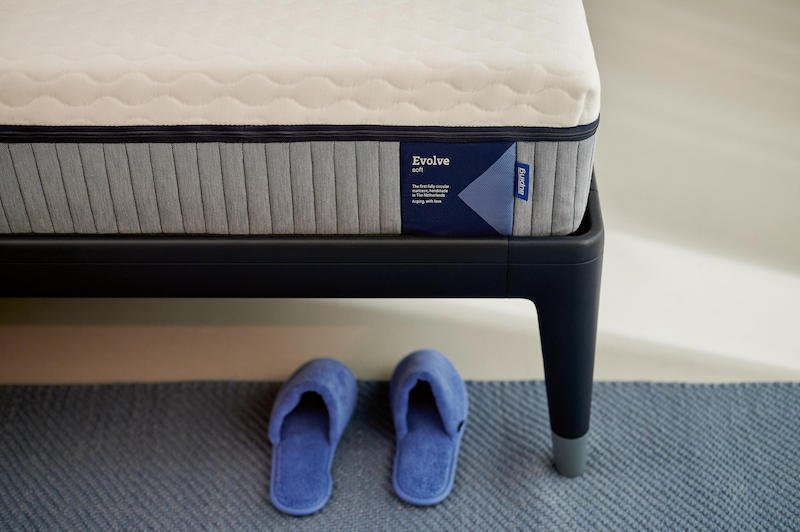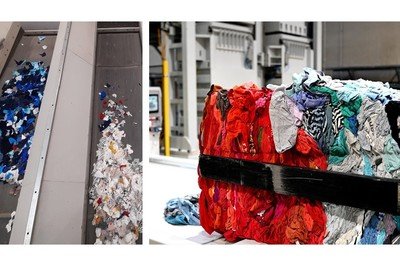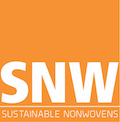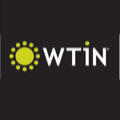
The adoption of needlepunching for the production of sustainable fleece garments by sports brand Nike is a major development in finally ushering nonwovens into the field of mainstream fashion.
It is also symptomatic of the much bigger changes that are driving innovation across the global textile industry.
The first grey hoodies and crewneck sweatshirts in the new Nike Forward range – the result of over five years of research – have already been launched and will be followed by other styles in what the brand is hailing as its most significant apparel innovation in thirty years.
The standard needlepunching process has been around rather a long time – the first patent for a nonwoven needlepunch machine was published in the UK in 1859 – but this is just one example of how the major apparel brands are becoming much more invested than ever before in the way their garments are made, and what they are made of.
Simplification
By moving away from traditional knitting or weaving processes, Nike has discovered it can simplify material fabrication by eliminating yarn spinning and reducing process steps compared to the traditional multi-stage creation cycle for garments.
Nike Forward material also has a lighter density than traditional knitted fleece, which achieves a 75% carbon reduction in production, and the finished product is also comprised of 70% recycled content by weight.
Beyond extensive use as interlinings, nonwovens as garments have not really progressed past the disposable protective suits that have proved so effective in many emergency situations – notably the fight against the Covid-19 pandemic – and their key limitations in terms of durability have been in drape, breathability, pilling, abrasion resistance and washability.
Tellingly, Nike recommends that Nike Forward hoodies and crewneck tops should only be washed after they’ve been worn at least five times – like a favourite pair of jeans. They are not ‘wear-it-and-wash-it’ products, the brand emphasises. They should also only be washed in cold water and air dried, and may require a fabric shaver to cope with pilling. Clearly, Nike believes the time is now right for its customers to accept certain trade-offs between easy convenience and making major sustainable gains.
Legislation
Sustainability is, of course, the key driver for such developments, and not least pending legislation. From January 1st 2025, for example the separate collection of textile waste will become mandatory for all EU member states and Extended Producer Responsibility (ERP) will put the ball squarely in the court of the brands for what is done with it post-consumer.
Already, much is being achieved very rapidly, not least in the push for renewable alternative raw materials to synthetic fibres such as polyester.
In Sweden, for example, Renewcell has developed a renewable dissolving pulp made from cotton-rich textile waste that can be turned into new fibres and filaments to allow for a circular textile production system to be established.
Having only started construction of its first industrial plant in October 2021, with an annual capacity of 60,000-tons, Renewcell has now commissioned it ahead of schedule.
Over 80% of the plant’s capacity has already been reserved by supportive customers, following a series of high-profile capsule collections from brands, and industrial scale-up was made possible by the new technology being in part adapted from the established paper-making process in partnership with SCA, with whom Renewcell shares the site of its new plant.
There is a similar story of major brand support and capacity off-take at Infinited Fiber Company, which is rapidly converting a shuttered paper mill in Finland for the production of 30,000 tons of its Infinna fibre by 2025.
Infinited’s technology, turns cellulose-based raw materials, like cotton-rich textile waste, used cardboard or rice or wheat straw, into Infinna – a unique, premium textile fibre with the natural, soft look and feel of cotton.
Monomaterials
There are a number of other success stories involving new raw materials, but nevertheless, current forecasts show that another 45 million tons of fibres will be required to meet rising demand by 2030, of which 20% at best will be renewable.
There is a lot of effort going into the establishment of closed loop recycling for synthetics, but there is a general problem in dealing with the mixed fibre textile waste that most garments are currently made of, while a future shortage of recycled PET polyester for textile manufacturing is anticipated, as bottle companies continue to absorb existing capacities.
As a result, the case for monomaterial garments and designing for recycling as another way of effectively combatting fast fashion which is also becoming stronger all the time.
Significantly, Nike Forward 100% monomaterial garments forgo all embellishments. They come without zippers or any other extra trims, with raw cut pockets. The fabrics are also undyed, to minimise water usage.
In short, the platform is being purpose-developed for circularity.
Mattresses
The case for monomaterials also makes perfect sense in the nonwovens industry, particularly in more durable applications away from complex absorbent hygiene products.
At the EDANA Circular Nonwovens Forum held in Brussels on September 22nd for example, Hugo Christiaen, Director of CSR (Corporate Social Responsibility) for nonwovens producer TWE, provided details of a scheme it is developing in Belgium with mattress manufacturer Auping and fibre producer Indorama.
With the exception of its metal springs, Auping’s latest Evolve mattress is comprised solely of 100% polyester components, primarily TWE nonwovens as the insulation.
“In conventional mattresses, the springs are normally wrapped in polypropylene casings, but in the Evolve they are wrapped in polyester materials,” Christiaen said. “The ticking, stitching yarns and even the zipper for the casing are also 100% polyester.”
Auping is establishing a take-back scheme for the mattresses after use and will send them to the Indorama plant in Ireland to be repelletised for new fibres. TWE will then turn the fibres into new nonwovens it supplies back to Auping for use in new mattresses.
“Trials involving ten tons of post-industrial mattress waste have so far proved very successful and all the indications are that the circular supply chain we’re establishing will have a very positive impact on CO2 emissions savings,” Christiaen concluded.









